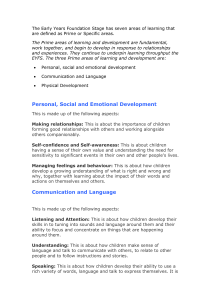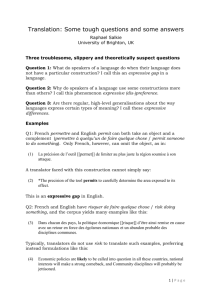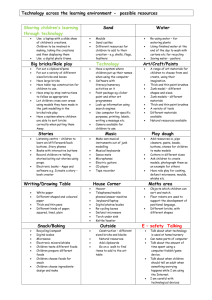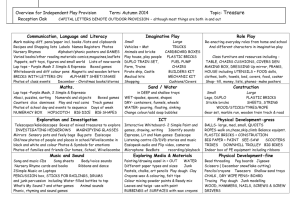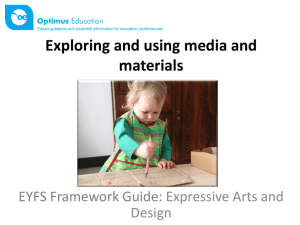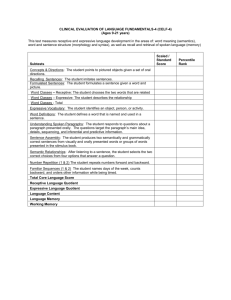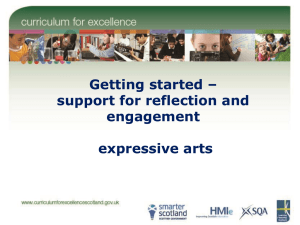Long Term Plan for Construction Area
advertisement
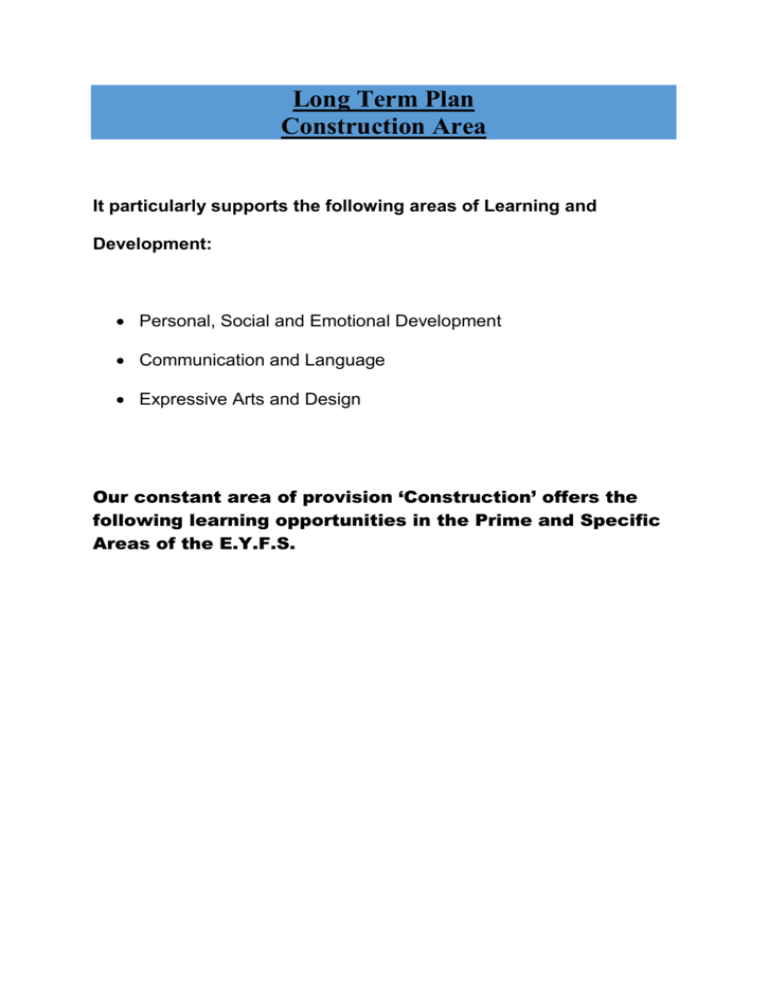
Long Term Plan Construction Area It particularly supports the following areas of Learning and Development: Personal, Social and Emotional Development Communication and Language Expressive Arts and Design Our constant area of provision ‘Construction’ offers the following learning opportunities in the Prime and Specific Areas of the E.Y.F.S. Construction Play Areas of Learning and Development Learning opportunities Prime Areas Personal, Social, and Emotional Development Communication and Language Co-operate, take turns and share equipment apart of a group. Respect and value others ideas Take care of equipment Use the language of negotiation e.g. please can I have some of the wheels Develop confidence in using a variety of construction materials Develop independence in constructing with different materials Extend imagination Talk about what they have done with confidence and a sense of achievement Take responsibility for their own play e.g. planning, designing and creating a Construction individually or as part of a group activity Talk and listen with peers and adults about their work with construction materials • listen to instructions • explain the process of construction – what worked/didn’t work? • follow plans • describe their actions and the actions of others • extend their vocabulary associated with construction e.g. build, design, model, on top of, next to, in front of, wood, duplo mobilo, blocks, plastic • explain cause and effect e.g. the tower fell over because there were too many bricks • talk in detail about what they have made Physical Development develop fine motor skills through manipulating a range of construction equipment • develop gross motor skills e.g. lifting, carrying, holding large pieces of construction materials • learn to fit together and take apart construction materials with increasing skill/control • develop hand/eye co-ordination • develop spatial awareness e.g. working in large spaces with large construction • understand and demonstrate simple rules Specific Areas Understanding the World talk about features of their local environment e.g. building models of houses, shops, nursery school, bridges • talk about the work of the builder, bricklayer, architect, plumber, electrician etc • talk about their own experiences with construction e.g. building/moving to a new house • develop an awareness of the purpose of some features of their environment e.g. why the car park is next to the supermarket • explore objects on the interest table associated with construction e.g. cement trowel, bricks, pipes, timber guttering Mathematics • explore mathematical concepts e.g. size, shape, number, space • recognise and name shapes in equipment/objects • understand and use a variety of positional words e.g. on top of, beside, under, below • solve problems – what will I make? how will I make it move? • order blocks by size – develop language of comparison, biggest, smallest • compare the height, length and width of objects made • estimate and predict e.g. how many more do I need? Expressive Arts and Design select appropriate equipment for different types of construction play – natural/man-made • compare different types of materials and their properties • ask questions about how things work and why e.g. how do you make the ladder on the fire engine longer • use a variety of tools to make models – hammers, scissors, masking tape • explore joining materials together – tape, glue, pritt, blutac, staples • use a variety of media (chalk, crayon, felt pen etc) to decorate models • build for a variety of purposes e.g. make a truck that will carry some animals, a chair for teddy • use play mats to represent some environments explore the shapes, forms, colours and patterns of a variety of construction material • encourage children to talk about textures rough/smooth • make simple models e.g. houses, cars, robots, boats, castles using commercial and junk material • encourage creative ideas through mixing/combining different construction kits • use blocks, commercial and junk materials to create props for imaginative play e.g. stories Three Bill Goats Gruff, Three Little Pigs • value their own work and the work of others Literacy • use books as a source of ideas e.g. houses, Bob the Builder • label models Prime Communication Physical Development and Language Speaking Understanding Listening and attention Moving and handling Areas Personal, Social and Emotional Development Self-confidence and self-awareness Managing feelings and behavior Specific Areas Literacy Mathematics Understanding Expressive the World Arts and Design Reading writing Shape, space and measure numbers Technology The world Being imaginative Exploring and using media and material.
